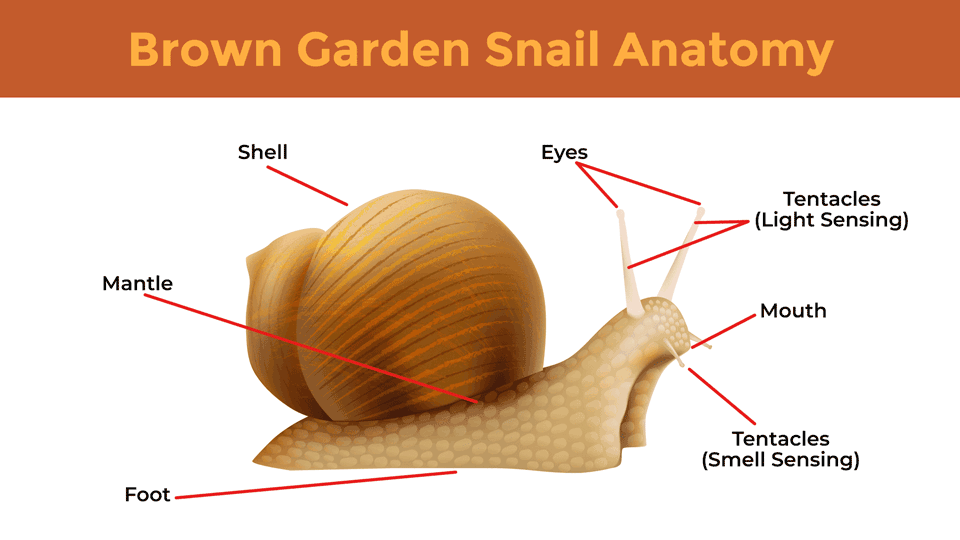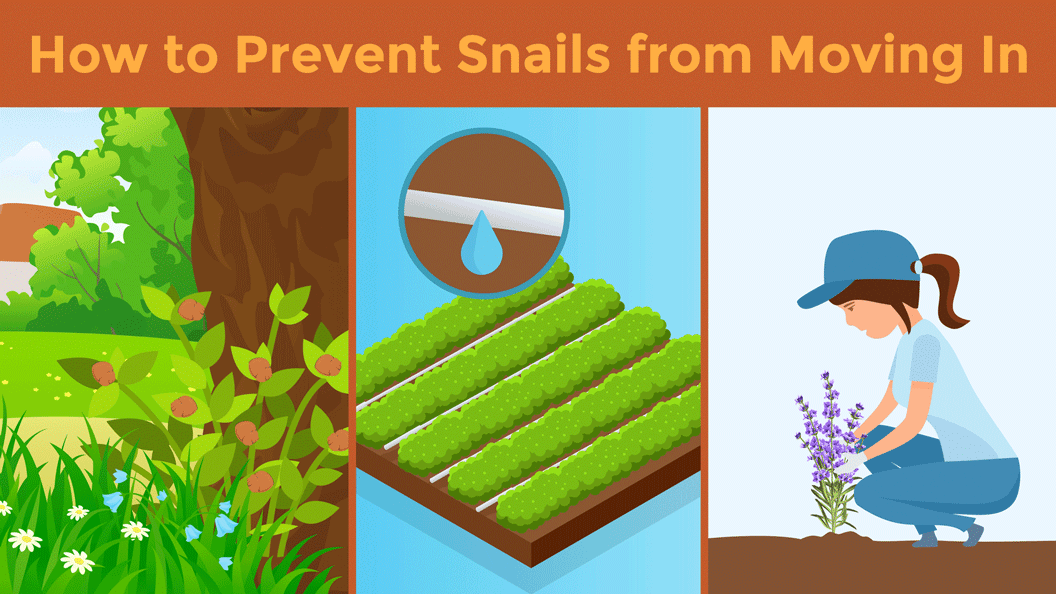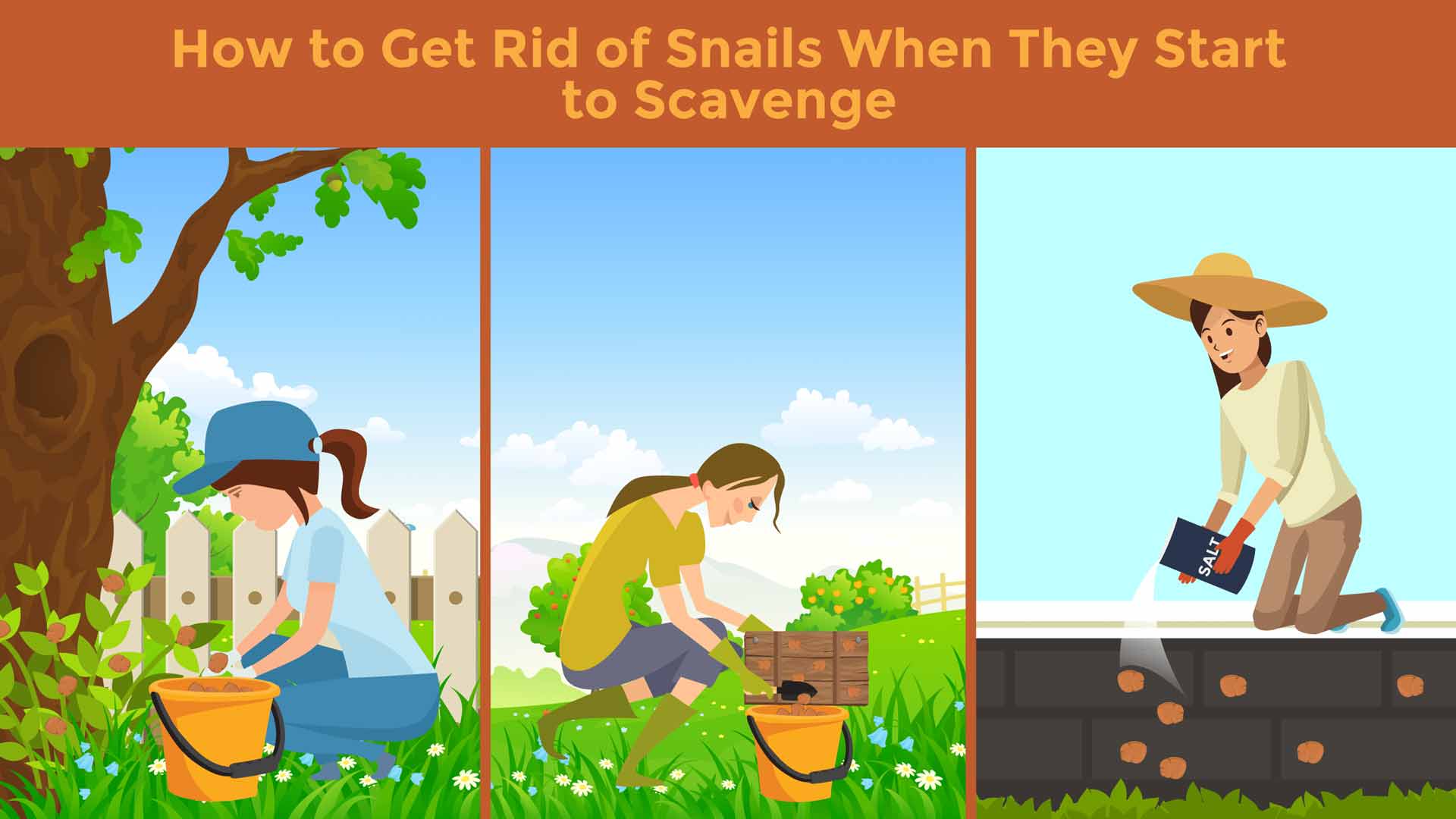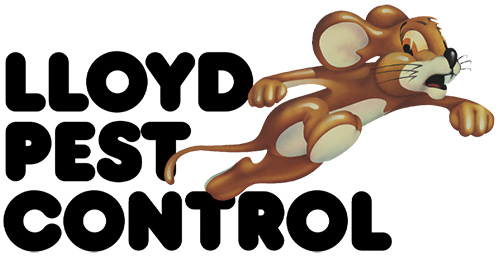How To Get Rid of Snails: A Slimy Scourge On Gardens, Farms, and Crops
Pest Control and Extermination Tips
The slimy scourge that we know of as snails were introduced to California in the 1850s from international travelers. Thought to be carried over by French escargot connoisseurs (Snail-eaters? Ick!) and hobbyists who collected these shelled slugs, the brown garden snail (Cornu aspersum) has since multiplied its population exponentially – destroying bountiful West Coast gardens, landscapes, and farms in their oozing path.
Far from your friendly sea snail, Gary, brown garden snails can be a cosmetic and costly burden on your crops and plants, chewing up the outside layer of your fruits and eating holes in the leaves of your landscaping with thousands of microscopic teeth.
At Lloyd Pest Control, we want all Southern California residents and farmers to keep pests like garden snails from causing extensive damage to their landscaping or produce. But to do so, it’s crucial to understand how to identify the brown garden snail, what environments allow them to thrive, and what you can do to keep these soggy snails far from your land.
Identifying Brown Garden Snails
As a member of the mollusk phylum family, brown garden snails have a similar anatomy to the slug (Deroceras reticulatum), with the addition of spiral shells on their backs. These gastropods are around 1 inch (2.5 cm) in diameter and have a distinct brown-gray color pattern on their bodies. Their shells normally range from yellowish-brown to a cream-like color, featuring spiral bands with dark, muted-yellow flecks and streaks.

Both land slugs and snails are hermaphrodites – meaning that each mollusk has male and female reproductive organs, giving them all the ability to lay eggs after mating. Fully matured brown garden snails lay about 80 spherical, pearl-white eggs at a time in holes within the topsoil. With the ability to lay eggs up to six times a year, these gooey garden snails utilize the mild California weather to grow their populations rapidly.
Snails and slugs move by sliding along on their muscular undersides, constantly secreting mucus that helps to streamline their movements. You can tell if these pests are in your area by their silvery trails that are left behind once their mucus highways dry up – or if there’s noticeable damage to your produce or plants.
How Snails Survive On Your Land
Brown garden snails thrive in moist environments that are safely hidden from the heat of the sun. Most active during foggy, cloudy, or rainy days when it’s damp, these snail scoundrels will feed on a wide variety of living plants and decaying plant matter – such as young tree bark, ripe or ripening fruit crops, or young tree or plant leaves.
Other common plants snails consume include:
- Basil
- Beans
- Cabbage
- Dahlia
- Delphinium
- Hosta
- Lettuce
- Marigolds
- Various vegetable plants
When feeding on plants, snails opt for seedlings, succulents, turfgrass, or herbs. As they munch on your foliage, they scrape their rasp-like tongues along the smooth edges of plant leaves and succulent arms, causing irregular-shaped holes and chips across the outermost surface area. Thankfully, most snails won’t be able to eat enough of your plants to kill them before you notice, so the damage they cause on your ornamentals is mostly an aesthetic issue.
Snails also go after many different types of ripe or ripening fruits – such as strawberries, tomatoes, and citrus fruits (feeding on both the fruit and bark of citrus trees). When snacking on fruits, they chew out circular-shaped areas on the rind – making the fruit appear unappetizing and blemished. Snails can be extremely damaging when nesting and reproducing in citrus fruit orchards, as citrus farmers utilize irrigation methods that create the perfect, moist environment for snails to prosper.
How to Prevent Snails from Moving In

Eliminate Snail Hideouts
Dealing with an abundance of snails on your land starts with eliminating as many snail hideouts as possible. From tall weeds around tree trunks to loose organic debris around your garden or produce, snails will look for any dark, shaded place they can find to call home. Naturally, you may have areas across your land that create natural snail hiding places and cannot be changed, so do your best to check on these specific spots frequently.
Opt for Drip Irrigation Methods
When setting up irrigation methods, opt for drip irrigation rather than sprinkler irrigation to reduce humidity and minimize multiple moist surfaces in the area. Drip irrigation techniques allow your plants to be watered closer to their roots, keeping the surface level drier. Additionally, make sure to irrigate your crops or plants in the morning time, allowing the soil to dry out throughout the day rather than staying soaked overnight.
Landscape with Snail-Resistant Plants
If you notice snails thriving in certain spots of your yard, try to avoid growing plants or produce that they are attracted to. Remember, snails and slugs primarily feed on seedlings and succulent foliage.
Types of plants that snails are NOT attracted to include:
- Lavender
- Rosemary
- Sage
- Ferns
- Cyclamen
- Hydrangea
- California Poppy
- Nasturtium
- Lantana
Snails tend to stray far away from plants that are highly scented, ornamental woody plants, and ornamental grasses.
How to Get Rid of Snails When They Start to Scavenge

Hand-Pick Them Out
While this method might seem primitive, hand-picking snails from your garden or crops on a daily basis can be an effective way to eliminate their numbers. When scouring your area for snails, pay close attention to any hiding spots that may allow for snail populations to grow and do your best to get rid of them.
If you’re noticing snail damage but having a tough time sourcing them, you can water your entire area by hose or sprinkler during the late afternoon – starting your snail search after the sun sets with the help of a flashlight. Each time you hand-pick snails from your yard, you can put them in an empty bucket and relocate them to areas at least 65 feet (20 meters) away. It’s thought that snails have a natural homing instinct, but if they are taken far enough away from your garden or farm, they likely won’t be able to find their way back.
Set Humane Snail Traps and Barriers
In addition to temporarily utilizing sprinkler or hose irrigation to draw out snails, you can set up humane traps that enhance your chances of snatching snails at the source. To aid in capture, you can build and place wooden traps with runners throughout your landscape to allow them to crawl underneath – checking the underside at least once a week to see if snails are attached, hand-picking them off, and then relocating them.
Additionally, snails’ mucus secretions have a chemical reaction to copper, causing misfiring in their nervous systems and delivering an electric shock if they come in contact. Copper foil, banding, or screens on or around your garden can help keep snails far away from your valuable landscaping or food.
Salt
If you’ve ever poured table salt on a rogue slug in your driveway, then you know that this simplified solution can work! Mollusks are made up of a great deal of water, and their membranes are more permeable than most animals. Therefore, salt poured on top of these critters causes osmosis to occur – a biological phenomenon in which water passes from one region of high water concentration through a semipermeable membrane to a region of lower water concentration. This means that when salt is applied to snails, large amounts of fluid from inside their membranes rush to the surface to restore equilibrium and dilute the concentration of salt.
Although salt can be a great way to take care of a few snails here and there, using large amounts of organic salt in your garden can increase the salinity of the soil and damage your plants or crops. If the level of salts in the soil water is too high, water may flow from the plant roots back into the soil – resulting in dehydration of the plant, yield decline, or even death of the plant. If using salt, make sure to use inorganic salt (without a carbon-hydrogen bond) to ward off snails without harming your landscape.
Introduce Decollate Snails
Decollate snails (Rumina decollata) are natural predators to brown garden snails. By introducing these snails to your garden or crop, they can eliminate your harmful snail infestation with minimal damage to your land. Decollate snails are easy to differentiate from brown snails, as they have conical shells and grow to about 2 to 2.5 inches long.
During the daytime, decollates live in the first few inches of moist topsoil, leaf mulch, or underneath rocks. As the sun sets, they become active and will hunt slugs and snails – feasting on all types of mollusks and their eggs. If this method isn’t controlled properly, decollate snails can cause immense damage to endangered snail species or certain plants nearby, so be sure to contact your local department of agriculture for best practices.
Let Lloyd Pest Control Handle Your Lawn Pests
If snails are constantly returning to your garden or farm, don’t fret! These strategic methods can help you keep snails’ teeth far away from your ornamentals or produce the humane way – saving your valuable crops and luscious landscaping.
For more information on how Lloyd Pest Control can help you get rid of common lawn pests – such as ants, spiders, or fleas – don’t hesitate to get in touch with one of our pest professionals or get your free, instant quote today!






